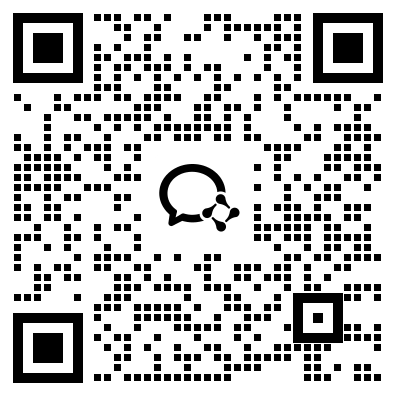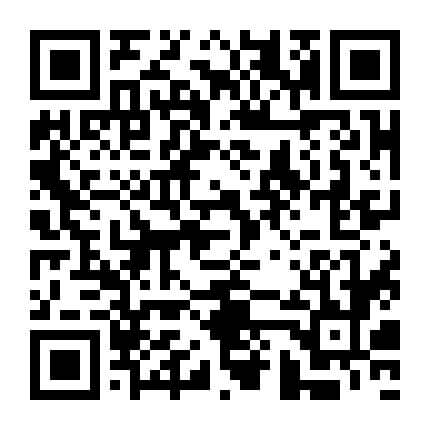考研201英语(一)在线题库每日一练(三百四十五)
摘要:以下是希赛网给大家分享考研201英语(一)在线题库每日一练,希望通过刷题可以帮助大家巩固重要知识点,对知识点查漏补缺,祝愿大家能顺利通过考试!
本文提供考研201英语(一)在线题库每日一练,以下为具体内容
1、In his book The Tipping Point, Malcolm Gladwell argues that “social epidemics” are driven in large part by the actions of a tiny minority of special individuals, often called influentials, who are unusually informed, persuasive, or well connected. The idea is intuitively compelling, but it doesn't explain how ideas actually spread.The supposed importance of influentials derives from a plausible-sounding but largely untested theory called the “two-step flow of communication”: Information flows from the media to the influentials and from them to everyone else. Marketers have embraced the two-step flow because it suggests that if they can just find and influence the influentials, those selected people will do most of the work for them. The theory also seems to explain the sudden and unexpected popularity of certain looks, brands, or neighborhoods. In many such cases, a cursory search for causes finds that some small group of people was wearing, promoting, or developing whatever it is before anyone else paid attention. Anecdotal evidence of this kind fits nicely with the idea that only certain special people can drive trends. In their recent work, however, some researchers have come up with the finding that influentials have far less impact on social epidemics than is generally supposed. In fact, they don't seem to be required at all.The researchers' argument stems from a simple observation about social influence: with the exception of a few celebrities like Oprah Winfrey—whose outsize presence is primarily a function of media, not interpersonal, influence—even the most influential members of a population simply don't interact with that many others. Yet it is precisely these non-celebrity influentials who, according to the two-step-flow theory, are supposed to drive social epidemics, by influencing their friends and colleagues directly. For a social epidemic to occur, however, each person so affected, must then influence his or her own acquaintances, who must in turn influence theirs, and so on; and just how many others pay attention to each of these people has little to do with the initial influential. If people in the network just two degrees removed from the initial influential prove resistant, for example, the cascade of change won't propagate very far or affect many people.Building on the basic truth about interpersonal influence, the researchers studied the dynamics of social influence by conducting thousands of computer simulations of populations, manipulating a number of variables relating to people's ability to influence others and their tendency to be influenced. They found that the principal requirement for what is called “global cascades” — the widespread propagation of influence through networks—is the presence not of a few influentials but, rather, of a critical mass of easily influenced people. 1.By citing the book The Tipping Point, the author intends to( ).2.The author suggests that the "two-step-flow theory" ( ). 3.What the researchers have observed recently shows that ( ). 4.The underlined phrase “these people” in paragraph 4 refers to the ones who ( ). 5.What is the essential element in the dynamics of social influence?
问题1
A、analyze the consequences of social epidemics
B、discuss influentials' function in spreading ideas
C、exemplify people's intuitive response to social epidemics
D、describe the essential characteristics of influentials
问题2
A、serves as a solution to marketing problems
B、has helped explain certain prevalent trends
C、has won support from influentials
D、requires solid evidence for its validity
问题3
A、the power of influence goes with social interactions
B、interpersonal links can be enhanced through the media
C、influentials have more channels to reach the public
D、most celebrities enjoy wide media attention
问题4
A、stay outside the network of social influence
B、have little contact with the source of influence
C、are influenced and then influence others
D、are influenced by the initial influential
问题5
A、The eagerness to be accepted.
B、The impulse to influence others.
C、The readiness to be influenced.
D、The inclination to rely on others.
2、Bankers have been blaming themselves for their troubles in public. Behind the scenes, they have been taking aim at someone else: the accounting standard-setters. Their rules, moan the banks, have forced them to report enormous losses, and it's just not fair. These rules say they must value some assets at the price a third party would pay, not the price managers and regulators would like them to fetch.Unfortunately, banks' lobbying now seems to be working. The details may be unknowable, but the independence of standard-setters, essential to the proper functioning of capital markets, is being compromised. And, unless banks carry toxic assets at prices that attract buyers, reviving the banking system will be difficult.After a bruising encounter with Congress, America's Financial Accounting Standards Board (FASB) rushed through rule changes. These gave banks more freedom to use models to value illiquid assets and more flexibility in recognizing losses on long-term assets in their income statements. Bob Herz, the FASB's chairman, cried out against those who “question our motives.” Yet bank shares rose and the changes enhance what one lobbying group politely calls “the use of judgment by management.”European ministers instantly demanded that the International Accounting Standards Board (IASB) do likewise. The IASB says it does not want to act without overall planning, but the pressure to fold when it completes its reconstruction of rules later this year is strong. Charlie McCreevy, a European commissioner, warned the IASB that it did “not live in a political vacuum” but “in the real world” and that Europe could yet develop different rules.It was banks that were on the wrong planet, with accounts that vastly overvalued assets. Today they argue that market prices overstate losses, because they largely reflect the temporary illiquidity of markets, not the likely extent of bad debts. The truth will not be known for years. But banks' shares trade below their book value, suggesting that investors are skeptical. And dead markets partly reflect the paralysis of banks which will not sell assets for fear of booking losses, yet are reluctant to buy all those supposed bargains.To get the system working again, losses must be recognized and dealt with. America's new plan to buy up toxic assets will not work unless banks mark assets to levels which buyers find attractive. Successful markets require independent and even combative standard-setters. The FASB and IASB have been exactly that, cleaning up rules on stock options and pensions, for example, against hostility from special interests. But by giving in to critics now they are inviting pressure to make more concessions.1.Bankers complained that they were forced to( ).2.According to the author, the rule changes of the FASB may result in ( ). 3.According to Paragraph 4, McCreevy objects to the IASB's attempt to ( ). 4.The author thinks the banks were “on the wrong planet” in that they ( ). 5.The author's attitude towards standard-setters is one of( ).
问题1
A、follow unfavorable asset evaluation rules
B、collect payments from third parties
C、cooperate with the price managers
D、reevaluate some of their assets
问题2
A、the diminishing role of management
B、the revival of the banking system
C、the banks' long-term asset losses
D、the weakening of its independence
问题3
A、keep away from political influences
B、evade the pressure from their peers
C、act on their own in rule-setting
D、take gradual measures in reform
问题4
A、misinterpreted market price indicators
B、exaggerated the real value of their assets
C、neglected the likely existence of bad debts
D、denied booking losses in their sale of assets
问题5
A、satisfaction
B、skepticism
C、objectiveness
D、sympathy
3、In the idealized version of how science is done, facts about the world are waiting to be observed and collected by objective researchers who use the scientific method to carry out their work. But in the everyday practice of science, discovery frequently follows an ambiguous and complicated route. We aim to be objective, but we cannot escape the context of our unique life experience. Prior knowledge and interest influence what we experience, what we think our experiences mean, and the subsequent actions we take. Opportunities for misinterpretation, error, and self-deception abound. Consequently, discovery claims should be thought of as protoscience. Similar to newly staked mining claims, they are full of potential. But it takes collective scrutiny and acceptance to transform a discovery claim into a mature discovery. This is the credibility process, through which the individual researcher's me, here, now becomes the community's anyone, anywhere, anytime. Objective knowledge is the goal, not the starting point. Once a discovery claim becomes public, the discoverer receives intellectual credit. But, unlike with mining claims, the community takes control of what happens next. Within the complex social structure of the scientific community, researchers make discoveries; editors and reviewers act as gatekeepers by controlling the publication process; other scientists use the new finding to suit their own purposes; and finally, the public (including other scientists) receives the new discovery and possibly accompanying technology. As a discovery claim works it through the community, the interaction and confrontation between shared and competing beliefs about the science and the technology involved transforms an individual's discovery claim into the community's credible discovery. Two paradoxes exist throughout this credibility process. First, scientific work tends to focus on some aspect of prevailing Knowledge that is viewed as incomplete or incorrect. Little reward accompanies duplication and confirmation of what is already known and believed. The goal is new-search, not re-search. Not surprisingly, newly published discovery claims and credible discoveries that appear to be important and convincing will always be open to challenge and potential modification or refutation by future researchers. Second, novelty itself frequently provokes disbelief. Nobel Laureate and physiologist Albert Azent-Gyorgyi once described discovery as “seeing what everybody has seen and thinking what nobody has thought.” But thinking what nobody else has thought and telling others what they have missed may not change their views. Sometimes years are required for truly novel discovery claims to be accepted and appreciated. In the end, credibility “happens” to a discovery claim—a process that corresponds to what philosopher Annette Baier has described as the commons of the mind. “We reason together, challenge, revise, and complete each other's reasoning and each other's conceptions of reason.” 1.According to the first paragraph, the process of discovery is characterized by its( ).2.It can be inferred from Paragraph 2 that credibility process requires ( ). 3.Paragraph 3 shows that a discovery claim becomes credible after it ( ). 4.Albert Szent-Gyorgyi would most likely agree that ( ). 5.Which of the following would be the best title of the test?
问题1
A、uncertainty and complexity
B、misconception and deceptiveness
C、logicality and objectivity
D、systematicness and regularity
问题2
A、strict inspection
B、shared efforts
C、individual wisdom
D、persistent innovation
问题3
A、has attracted the attention of the general public
B、has been examined by the scientific community
C、has received recognition from editors and reviewers
D、has been frequently quoted by peer scientists
问题4
A、scientific claims will survive challenges
B、discoveries today inspire future research
C、efforts to make discoveries are justified
D、scientific work calls for a critical mind
问题5
A、Novelty as an Engine of Scientific Development.
B、Collective Scrutiny in Scientific Discovery.
C、Evolution of Credibility in Doing Science.
D、Challenge to Credibility at the Gate to Science.
4、People are, on the whole, poor at considering background information when making individual decisions. At first glance this might seem like a strength that (1) the ability to make judgments which are unbiased by (2) factors. But Dr. Uri Simonsohn speculated that an inability to consider the big (3) was leading decision-makers to be biased by the daily samples of information they were working with. (4), he theorised that a judge (5) of appearing too soft (6) crime might be more likely to send someone to prison (7) he had already sentenced five or six other defendants only to forced community service on that day.To (8) this idea, he turned to the university-admissions process. In theory, the (9) of an applicant should not depend on the few others (10) randomly for interview during the same day, but Dr Simonsohn suspected the truth was (11).He studied the results of 9,323 MBA interviews (12) by 31 admissions officers. The interviewers had (13) applicants on a scale of one to five. This scale (14) numerous factors into consideration. The scores were (15) used in conjunction with an applicant’s score on the Graduate Management Admission Test, or GMAT, a standardised exam which is (16) out of 800 points, to make a decision on whether to accept him or her.Dr Simonsonh found if the score of the previous candidate in a daily series of interviewees was 0.75 points or more higher than that of the one (17) that, then the score for the next applicant would (18) by an average of 0.075 points. This might sound small, but to (19) the effects of such a decrease a candidate would need 30 more GMAT points than would otherwise have been (20).
问题1
A、grants
B、submits
C、transmits
D、delivers
问题2
A、minor
B、objective
C、crucial
D、external
问题3
A、issue
B、vision
C、picture
D、moment
问题4
A、For example
B、On average
C、In principle
D、Above all
问题5
A、fond
B、fearful
C、capable
D、thoughtless
问题6
A、in
B、on
C、to
D、for
问题7
A、if
B、until
C、though
D、unless
问题8
A、promote
B、emphasize
C、share
D、test
问题9
A、decision
B、quality
C、status
D、success
问题10
A、chosen
B、studied
C、found
D、identified
问题11
A、exceptional
B、defensible
C、replaceable
D、otherwise
问题12
A、inspired
B、expressed
C、conducted
D、secured
问题13
A、assigned
B、rated
C、matched
D、arranged
问题14
A、put
B、got
C、gave
D、took
问题15
A、instead
B、then
C、ever
D、rather
问题16
A、selected
B、passed
C、marked
D、introduced
问题17
A、before
B、after
C、above
D、below
问题18
A、jump
B、float
C、drop
D、fluctuate
问题19
A、achieve
B、undo
C、maintain
D、disregard
问题20
A、promising
B、possible
C、necessary
D、helpful
5、In the 2006 film version of The Devil Wears Prada, Miranda Priestly, played by Meryl Streep, scold her unattractive assistant for imagining that high fashion doesn't affect her. Priestly explains how the deep blue color of the assistant's sweater descended over the years from fashion shows to department stores and to the bargain bin in which the poor girl doubtless found her garment.This top-down conception of the fashion business couldn't be more out of date or at odds with feverish world described in Overdressed, Elizabeth Cline's three-year indictment of “fast fashion”. In the last decades or so, advances in technology have allowed mass-market labels such as Zara, H&M, and Uniqlo to react to trends more quickly and anticipate demand more precisely. Quicker turnarounds mean less wasted inventory, more frequent releases, and more profit. Those labels encourage style-conscious consumers to see clothes as disposable—meant to last only a wash or two, although they don't advertise that—and to renew their wardrobe every few weeks. By offering on-trend items at dirt-cheap prices, Cline argues, these brands have hijacked fashion cycles, shaking an industry long accustomed to a seasonal pace.The victims of this revolution, of course, are not limited to designers. For H&M to offer a $5.95 knit miniskirt in all its 2,300-plus stores around the world, it must rely on low-wage, overseas labor, order in volumes that strain natural resources, and use massive amounts of harmful chemicals.Overdressed is the fashion world's answer to consumer-activist bestsellers like Michael Pollan's The Omnivore’s Dilemma. “Mass-produced clothing, like fast food, fills a hunger and need, yet is non-durable, and wasteful,” Cline argues. Americans, she finds, buy roughly 20 billion garments a year—about 64 items per person—and no matter how much they give away, this excess leads to waste. Towards the end of Overdressed, Cline introduced her ideal, a Brooklyn woman named Sarah Kate Beaumont, who since 2008 has made all of her own clothes—and beautifully. But as Cline is the first to note, it took Beaumont decades to perfect her craft; her example can't be knocked off.Though several fast-fashion companies have made efforts to curb their impact on labor and the environment—including H&M, with its green Conscious Collection Line—Cline believes lasting change can only be effected by the customer. She exhibits the idealism common to many advocates of sustainability, be it in food or in energy. Vanity is a constant; people will only start shopping more sustainably when they can't afford not to.1.Priestly criticizes her assistant for her( ).2.According to Cline, mass-market labels urge consumers to ( ). 3.The word “indictment” (Line 3, Para.2) is closest in meaning to ( ). 4.Which of the following can be inferred from the last paragraph? 5.What is the subject of the text?
问题1
A、poor bargaining skill
B、insensitivity to fashion
C、obsession with high fashion
D、lack of imagination
问题2
A、combat unnecessary waste
B、shut out the feverish fashion world
C、resist the influence of advertisements
D、shop for their garments more frequently
问题3
A、accusation
B、enthusiasm
C、indifference
D、tolerance
问题4
A、Vanity has more often been found in idealists.
B、The fast-fashion industry ignores sustainability.
C、People are more interested in unaffordable garments.
D、Pricing is vital to environment-friendly purchasing.
问题5
A、Satire on an extravagant lifestyle.
B、Challenge to a high-fashion myth.
C、Criticism of the fast-fashion industry.
D、Exposure of a mass-market secret.
点击查看【完整】试卷>>延伸阅读
- 历年考研国家分数线汇总(更新至2025年)
- 2025考研国家分数线正式发布
- 2025全国各省考研初试成绩公布时间汇总(更新中)
- 2025年考研成绩公布时间及查询流程
- 2025年全国硕士研究生招生考试(初试)温馨提示汇总
- 2025年全国硕士研究生招生考试考场规则

考研微信公众号

考研备考资料免费领取
去领取
- 1
- 1
- 7
 专注在线职业教育24年
专注在线职业教育24年









 扫描二维码
扫描二维码
 扫描二维码
扫描二维码








